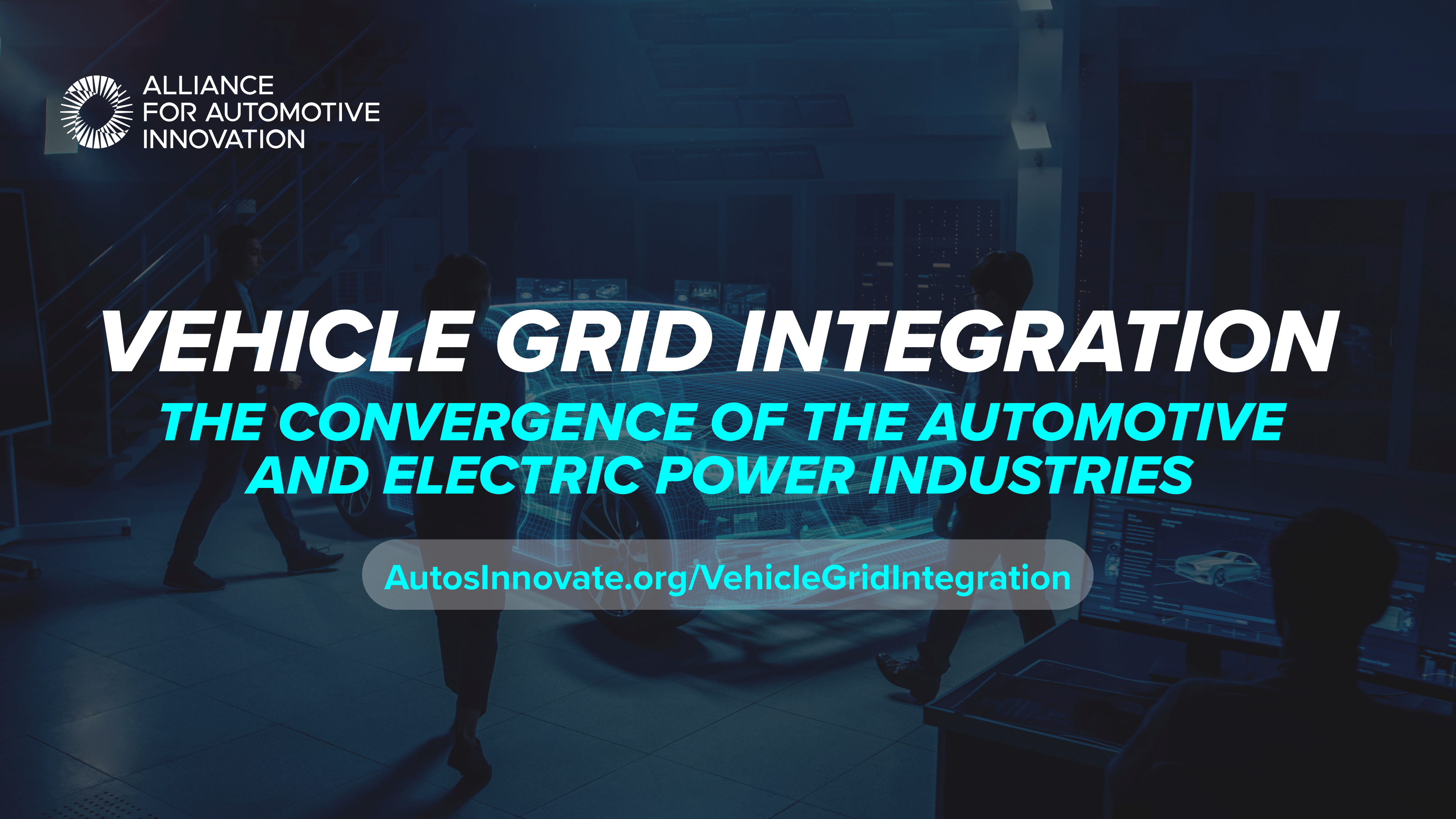New analysis from Alliance for Automotive Innovation examines economic and technical aspects for EV and electric grid integration
Automotive and utility sectors converging
Transition to electrified transportation requires significant policy and regulatory cooperation
Includes recommendations to utilities and policymakers on rates, managed charging, vehicle telematic and bidirectional charging technology
WASHINGTON, DC – The U.S. auto industry and the country’s electric utilities must ‘work together’ to navigate the intersection of electric vehicles and the electric grid according to a new analysis from Alliance for Automotive Innovation.
Vehicle Grid Integration: The Convergence of the Automotive and Electric Power Industries examines the economic and technical aspects of vehicle-grid integration (VGI) required for a successful transition to electrified mobility in the U.S.
The report includes recommendations to utilities, regulators and policymakers to get the electric grid EV ready, including: rate design, managed charging, vehicle telematics capabilities and bidirectional charging technology.
John Bozzella, president and CEO, Alliance for Automotive Innovation said: “The automotive and electric power industries are converging. What does that mean? It means drivers increasingly consider electric utilities as the gateway to reliable and affordable electric mobility. But EV drivers expect no compromise transportation – with convenient, reliable and affordable EV charging. This new report is a roadmap to achieve these goals and increase policy cooperation between automakers and utilities.”
Vehicle-Grid Integration Policy Recommendations:
- Utilities and regulators should adopt optional EV rates to ensure commercial viability of fleet electrification and charging stations in lightly trafficked areas;
- Utilities should make time of use (TOU) rates universally available to all EV drivers and structure programs to enable technologies like smart charging;
- Utilities should make both whole-house and EV-only time varying rates available to customers;
- Utilities and regulators should adopt programs and policies that compensate EV drivers for exporting power to the grid;
- Utilities should partner with automakers to develop marketing, education and outreach to EV drivers about ways to lower electricity bills by participating in demand response programs.
Read all the recommendations in Vehicle Grid Integration – The Convergence of the Automotive and Electric Power Industries:

Context: EV adoption will cause electricity usage to jump; grid modernization required:
- By 2030 EVs (including buses and commercial trucks) will increase U.S. electricity usage by 8 to 13 percent over 2021 levels, reaching 7 to 11 percent of all power consumed from the U.S. grid in 2030;
- In 2021, EVs accounted for less than 0.2 percent of power consumed in the U.S.
Learn more about EV purchasing trends and public charging availability in all 50 states in the Get Connected Electric Vehicle Report (Q1 2024):
- In Q1 2024, EVs represented 9.3 percent of new light-duty vehicle sales, down from 10.2 percent in Q4 2023 and up from 8.6 percent in Q1 2023;
- 113 EV cars, utility vehicles, pickup trucks and van models now available for sale in the U.S.
Automakers and battery partners have committed $125 billion (so far) to expand the production of EVs and batteries inside the U.S. and across North America.
The report was released at the National Association of Regulatory Utility Commissioners (NARUC) Summer Policy Summit.

